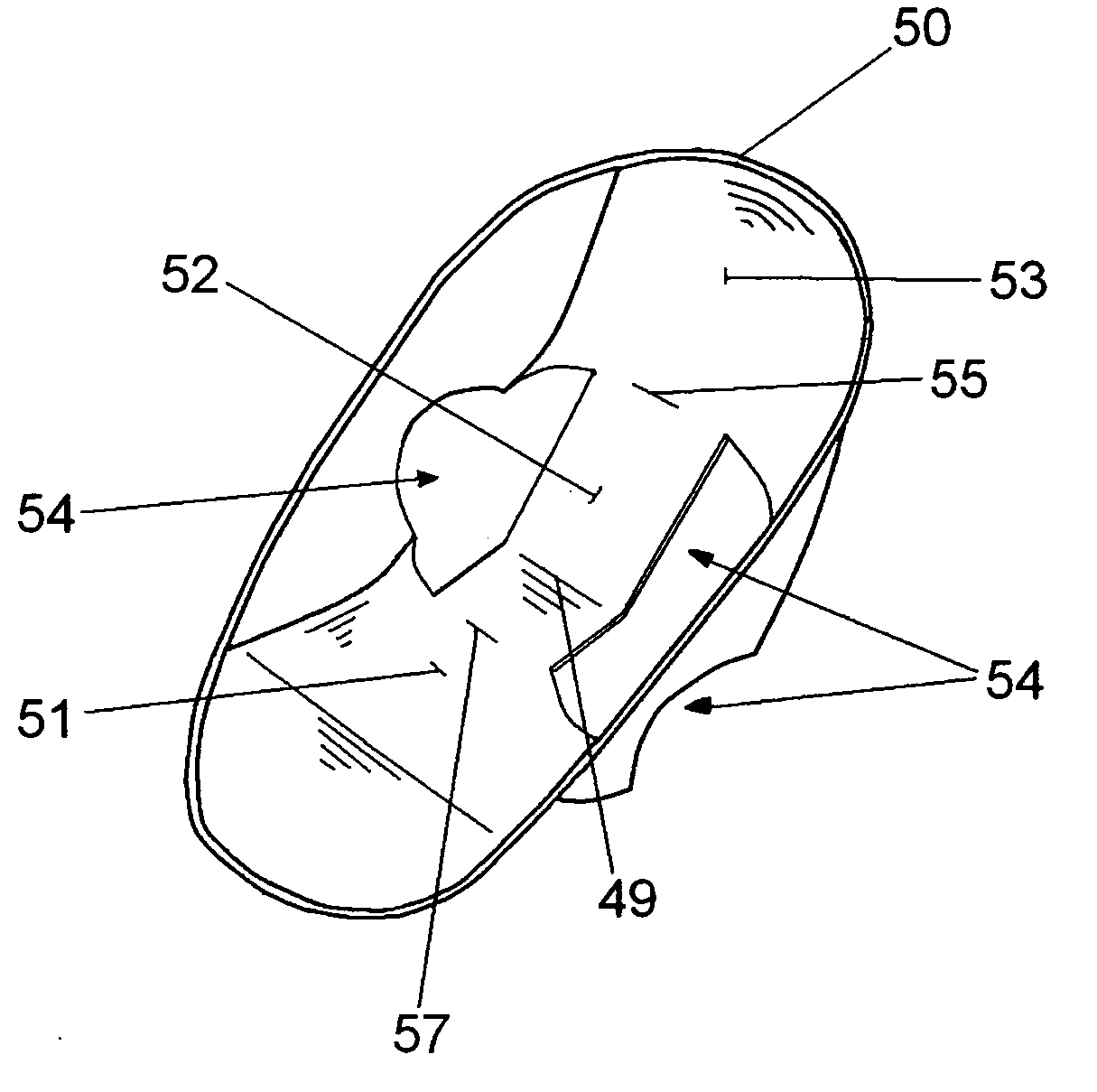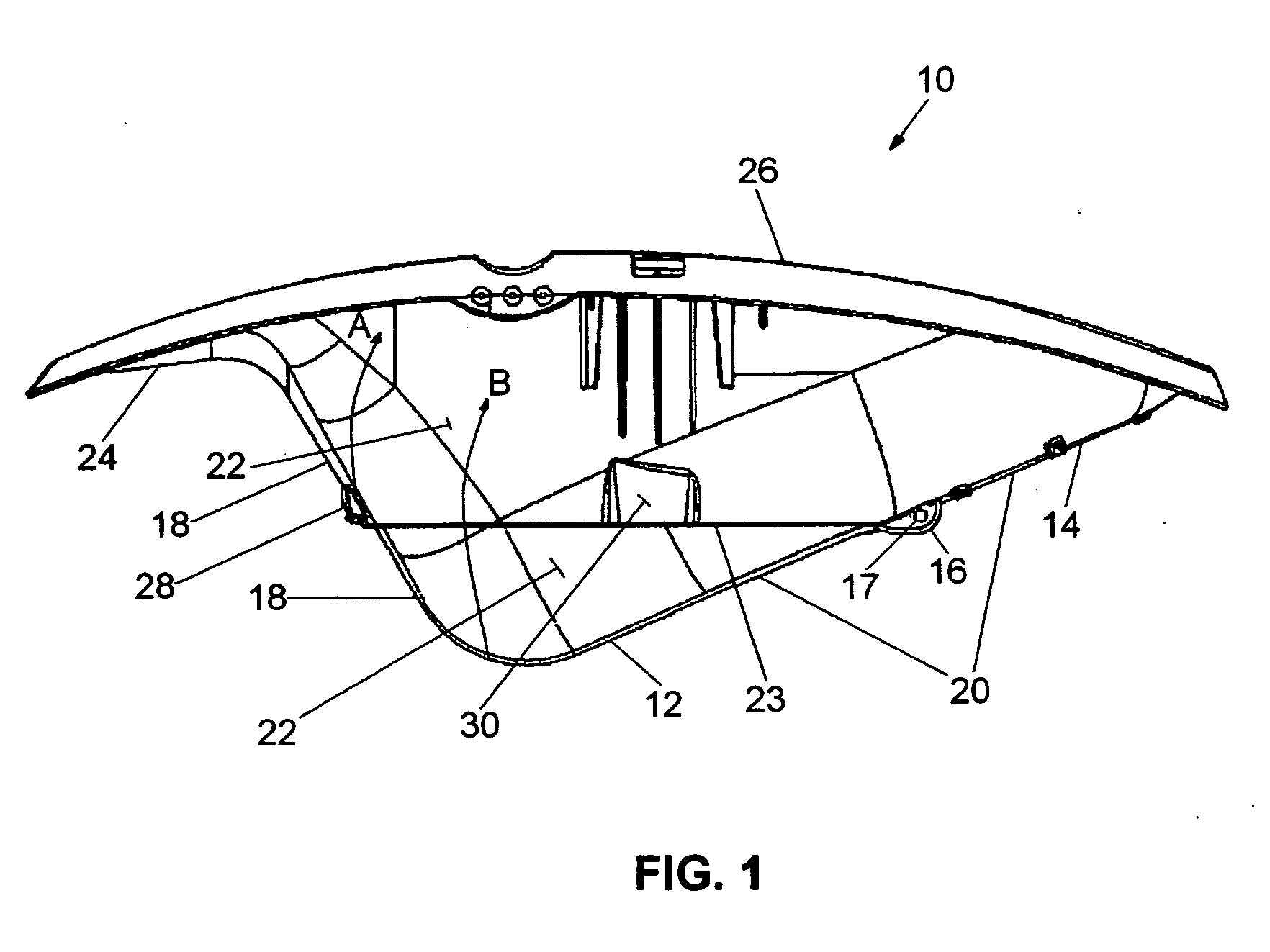Infant swing seat
a swing seat and seat technology, applied in the field of swing seats, can solve the problems of making the seat bulky and it is impossible to improperly assembled, and achieve the effects of reducing the shipping size of the seat, reducing shipping costs, and safely adjusting the recline angl
- Summary
- Abstract
- Description
- Claims
- Application Information
AI Technical Summary
Benefits of technology
Problems solved by technology
Method used
Image
Examples
Embodiment Construction
[0024]FIG. 1 is a side view of the preferred embodiment of the invention showing infant seat 10 assembled from two mating segments, junction segment 12 and base segment 14. Infant seat 10 is built with base segment 14 shaped as a ring that includes parts of the seat bottom 18, seat back 20, and two side walls 22. Base segment 14 has a larger access opening at outer edge 26 of the ring and a smaller junction opening at the inner edge of the ring. The second part of the seat is junction segment 12 shaped as a concave structure with an exposed edge and forming the confluence of seat bottom 18, seat back 20, and side walls 22. The exposed edge of junction section 12 mates with the inner opening of base segment 14 at junction line 23 to form a continuous basket shape.
[0025] Junction segment 12 is held within base segment 14 by hinge 16, hinge pin 17, and locking tabs 28 and 30. Together junction segment 12 and base segment 14 completely form seat bottom 18, seat back 20, and side walls ...
PUM
 Login to View More
Login to View More Abstract
Description
Claims
Application Information
 Login to View More
Login to View More - R&D
- Intellectual Property
- Life Sciences
- Materials
- Tech Scout
- Unparalleled Data Quality
- Higher Quality Content
- 60% Fewer Hallucinations
Browse by: Latest US Patents, China's latest patents, Technical Efficacy Thesaurus, Application Domain, Technology Topic, Popular Technical Reports.
© 2025 PatSnap. All rights reserved.Legal|Privacy policy|Modern Slavery Act Transparency Statement|Sitemap|About US| Contact US: help@patsnap.com



